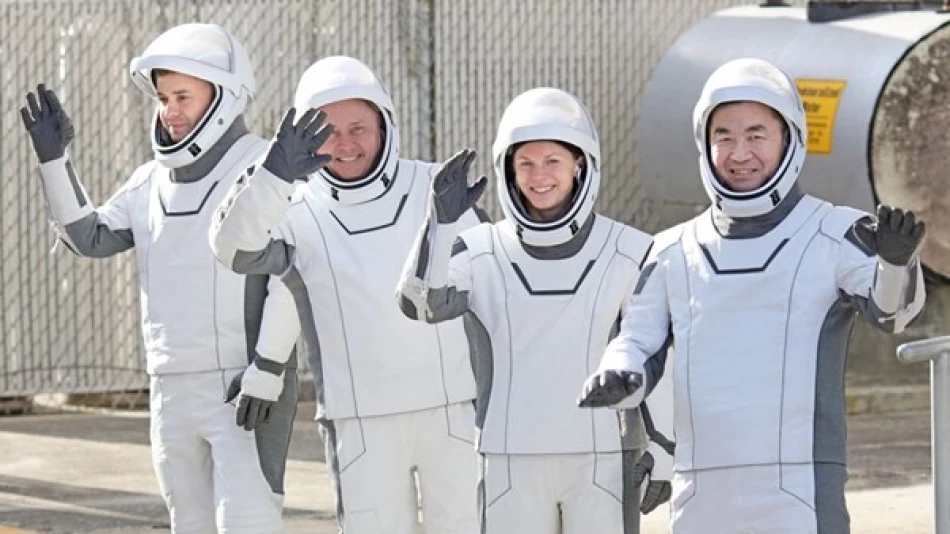
International Space Station Welcomes New Crew via SpaceX Resupply Mission
SpaceX Delivers New International Crew to Space Station in Record Time
SpaceX successfully transported four astronauts to the International Space Station (ISS) on Saturday in just 15 hours, marking another milestone in the company's dominance of NASA's crew transportation program. The mission temporarily brings the station's population to 11 astronauts as operations continue to expand in low Earth orbit.
Swift Journey Demonstrates Operational Maturity
The Dragon capsule launched from NASA's Kennedy Space Center carrying an international crew: NASA astronauts Zena Cardman and Mike Fincke, Japan's Kimiya Yui, and Russia's Oleg Platonov. The 15-hour transit time reflects SpaceX's refined approach to ISS docking procedures, significantly faster than the multi-day journeys that characterized early commercial crew missions.
This efficiency demonstrates how routine space station operations have become under SpaceX's Crew Dragon program, which has now completed multiple successful rotations since its first crewed flight in 2020.
Six-Month Mission Ahead
The newly arrived astronauts will spend at least six months aboard the orbital laboratory conducting scientific experiments and maintenance operations. Their arrival coincides with the planned departure of the previous crew, scheduled to return to Earth aboard another SpaceX vehicle next Wednesday.
Expanding Station Operations
With 11 astronauts temporarily aboard, the ISS is operating near its maximum capacity, highlighting the station's evolution into a busier hub for scientific research and commercial activities. This overlap period allows for knowledge transfer between crews and ensures continuity of critical experiments.
SpaceX's Commercial Dominance
The mission underscores SpaceX's virtual monopoly on NASA crew transportation following the retirement of the Space Shuttle program. Since Boeing's Starliner continues facing technical delays, SpaceX remains NASA's sole provider for astronaut transportation to the ISS.
This dependency has proven both beneficial and concerning for NASA. While SpaceX has delivered reliable, cost-effective service, the lack of redundancy leaves the agency vulnerable to any potential Dragon system failures.
International Cooperation Continues
Despite ongoing geopolitical tensions, the mission demonstrates the enduring nature of space cooperation. The inclusion of Russian cosmonaut Oleg Platonov alongside American and Japanese astronauts shows how the ISS partnership has remained largely insulated from terrestrial conflicts.
This cooperation becomes increasingly valuable as private space stations prepare to replace the aging ISS later this decade, potentially fragmenting the unified international approach that has characterized orbital operations for over two decades.
Most Viewed News

 Layla Al Mansoori
Layla Al Mansoori






